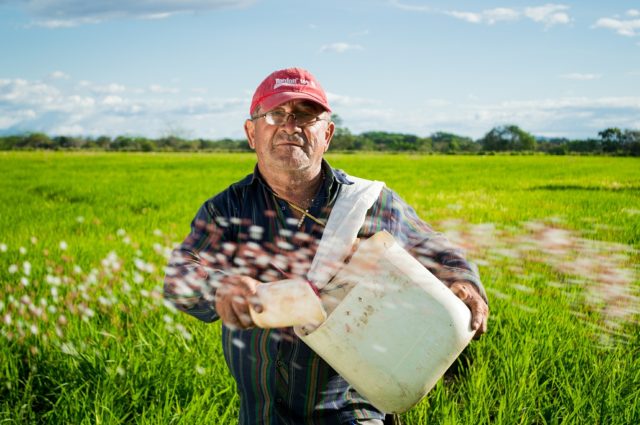5 Ways Technology Is Changing Agriculture
The ways in which farmers get their jobs done has dramatically shifted over the past 50 years. Technological advances have given the farming industry the ability to grow more crops, raise more livestock, and put in less manual labor to get it all done.
Technology has also changed the scene of a typical farm. Years ago it was common to see cows, pigs, and chickens all on the same farm. Now, farmers raise them separately in bulk. Check out some of the most specific ways in which technology is changing agriculture, and prepare to have your mind wowed.
Agrochemicals are enhancing yields
Farmers now have the ability to use chemistry to enhance and protect their crop yields. The realm of agrochemical development is growing, and scientists are working to make the practice safer for the environment and the consumers.
Mechanization reduces manual labor
One of the most significant changes in farming over the years has been the mechanization of many different daily processes. Instead of pushing a rusty plow through the fields for hours on end, farmers can now sit comfortably in an air-conditioned cabin.
Some farming machines are even able to operate independently through remote control access and programming. Milking the cows is also now a robotic process for large scale operations, and farmers can monitor production from a handheld tablet.
Technology means many livestock are raised inside
Technology means that farmers raise their livestock inside. Unless it’s beef cattle, the animals are raised in a climate controlled barn. Farmers also typically have the ability to use tech tools to automatically feed animals on a schedule.
Wi-Fi enabled controls give farmers the capability to keep a constant eye on their animals. In addition, it assures that they are producing happy, healthy product.
Radio Frequency Identification Tags
Farmers often allow beef cattle and cows to roam free on large portions of land. The issue is that farmers still need to keep a close eye on the well-being of their livestock, and RFID (radio frequency identification tags) solve that issue.
Farmers can access information on each animal, and RFID tags allow them to monitor the animal’s eating habits. There is also the option of ankle tags that provide information on how active the animal is throughout the day.
Analytics is the key to everything
Arguably the most impactful piece of technology in the agricultural industry has been the development of information processing systems. Data also keeps a large farming operation running smooth, and today’s technology gives farmers the ability to collect loads of data with little effort.
With more information and documentation, farming has become a very specific science of its own. The future implies some very cool innovations. It will also be fun to watch what comes of this still new relationship.








